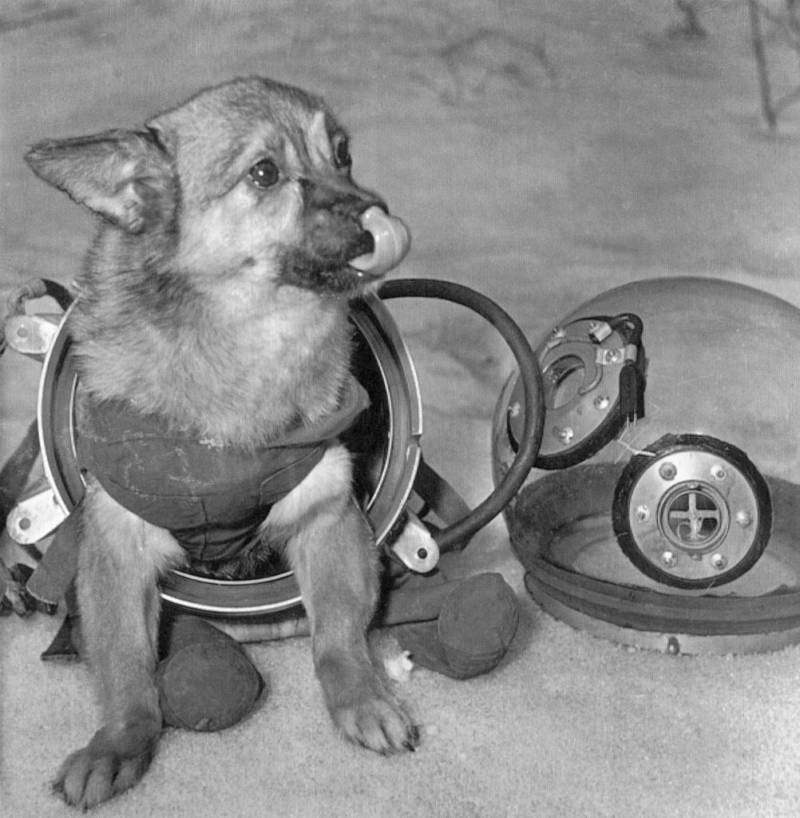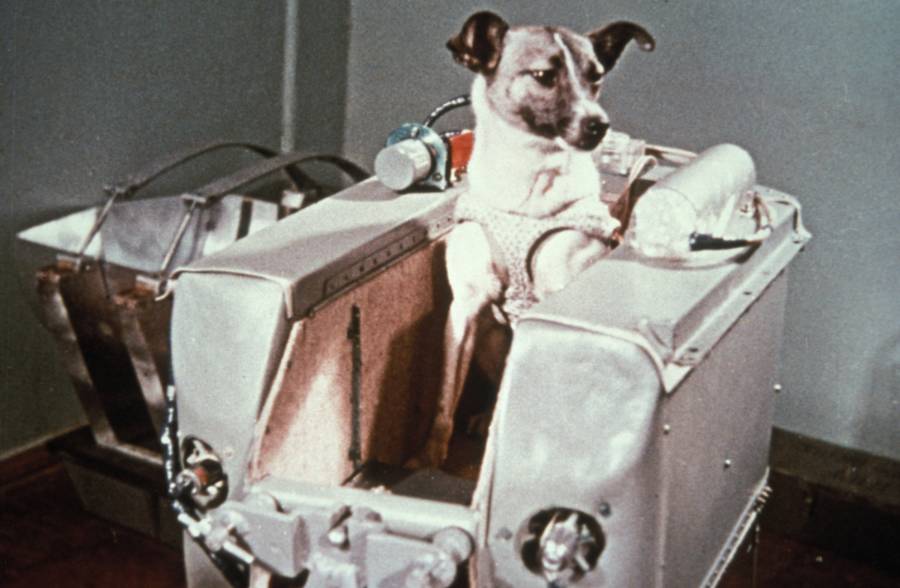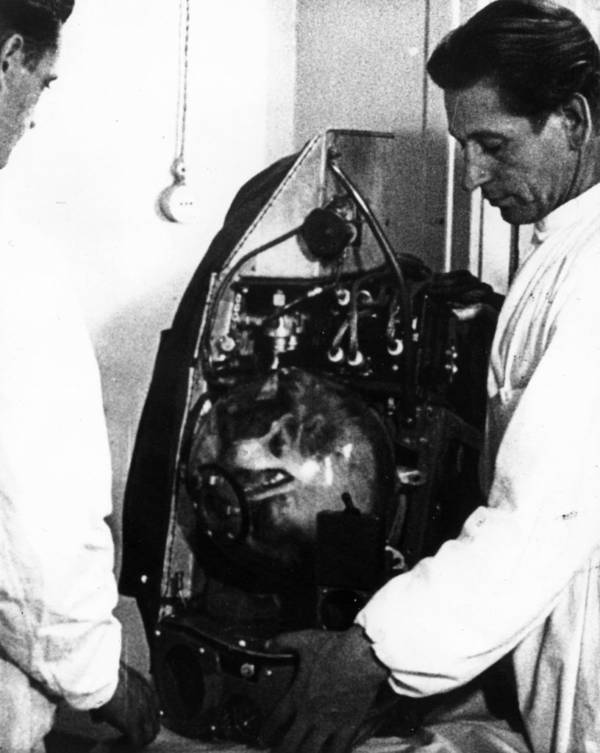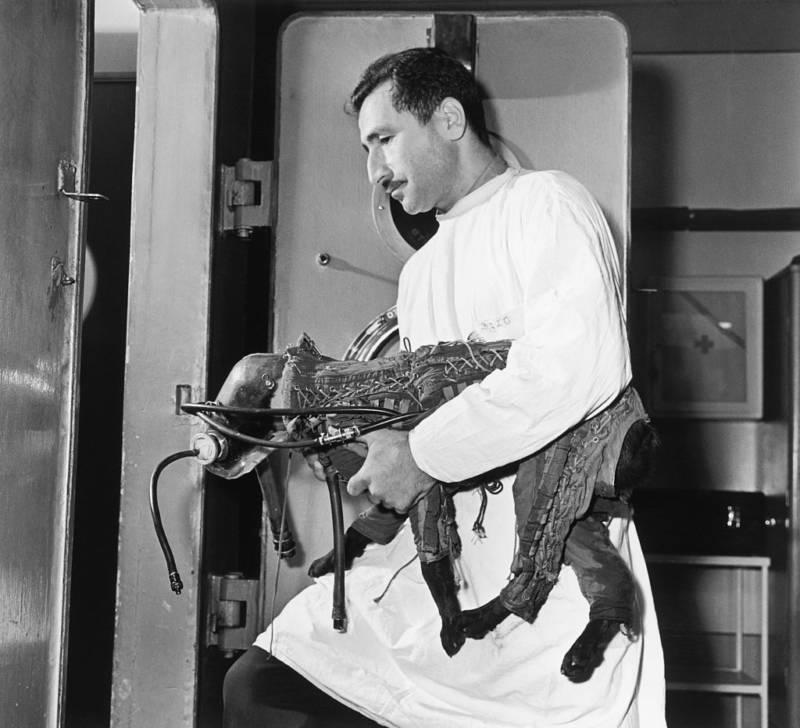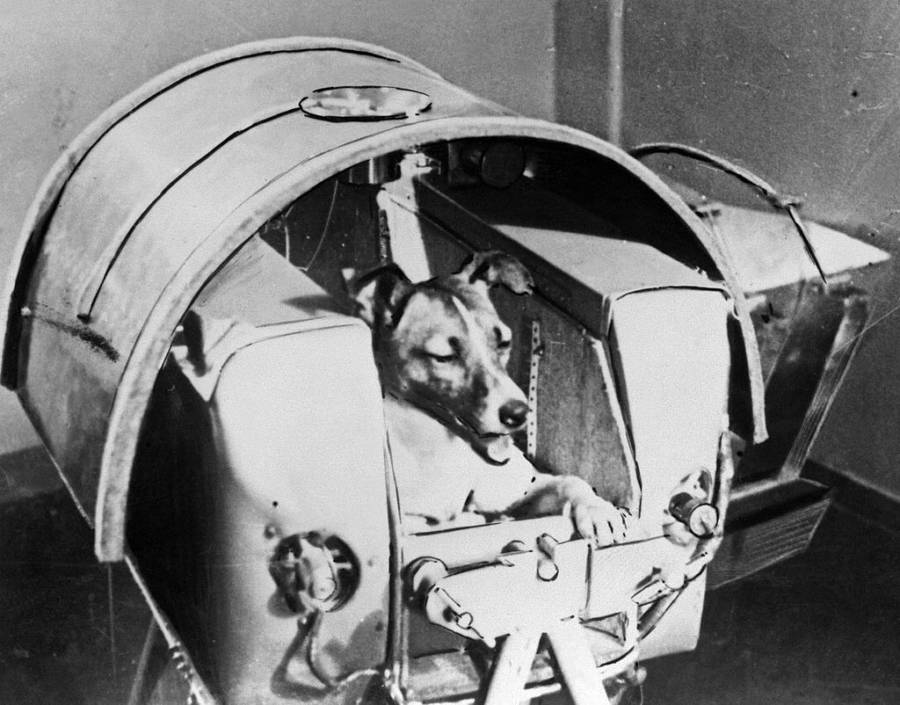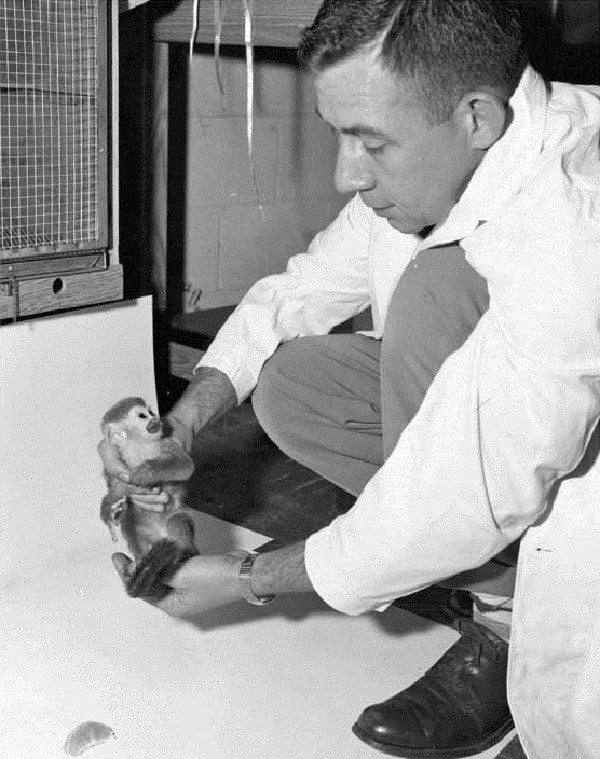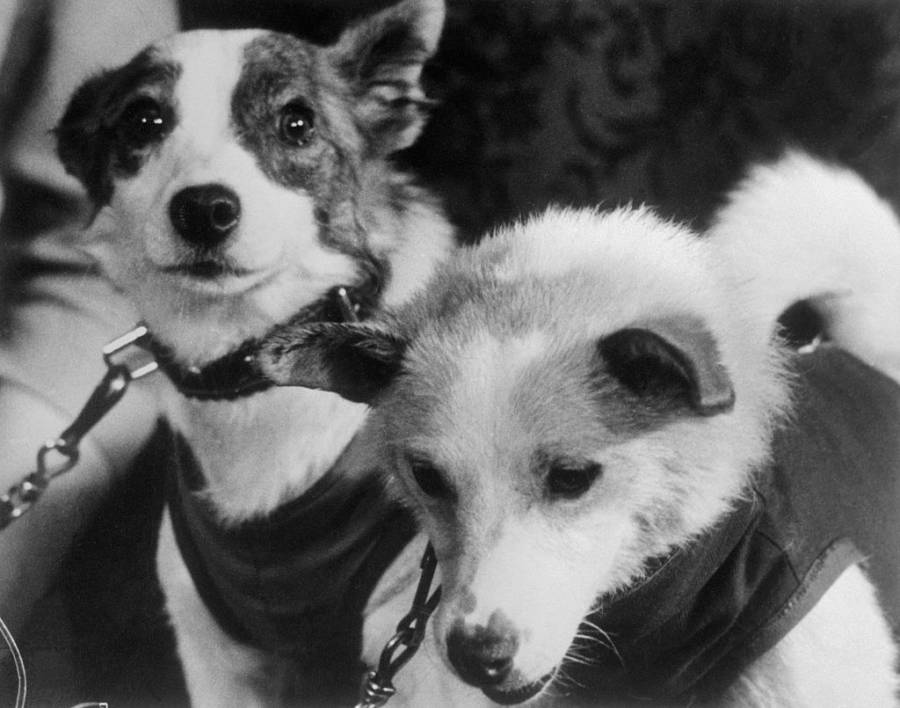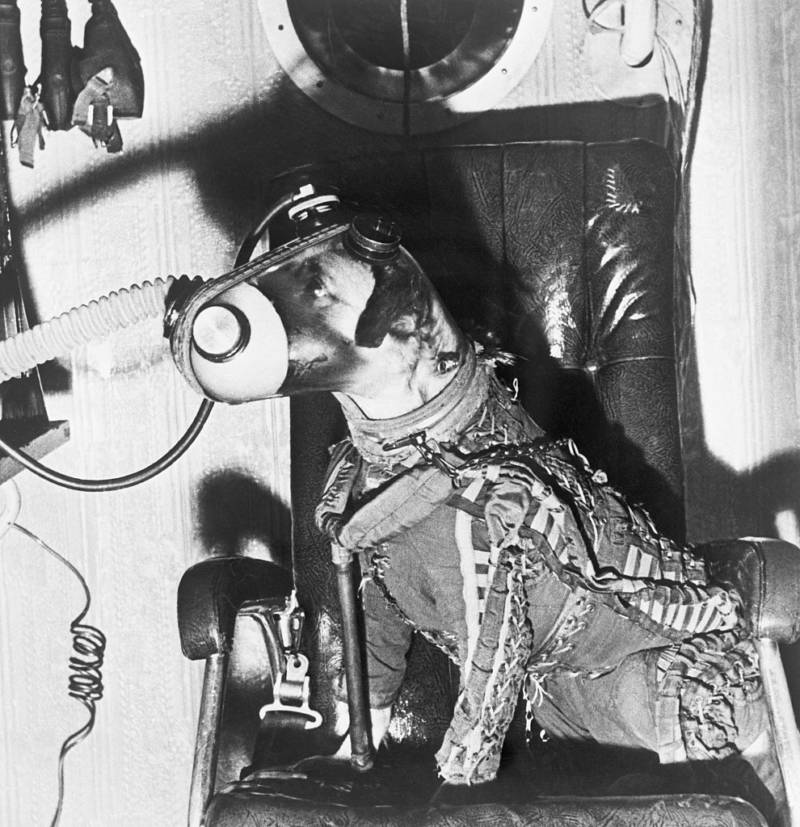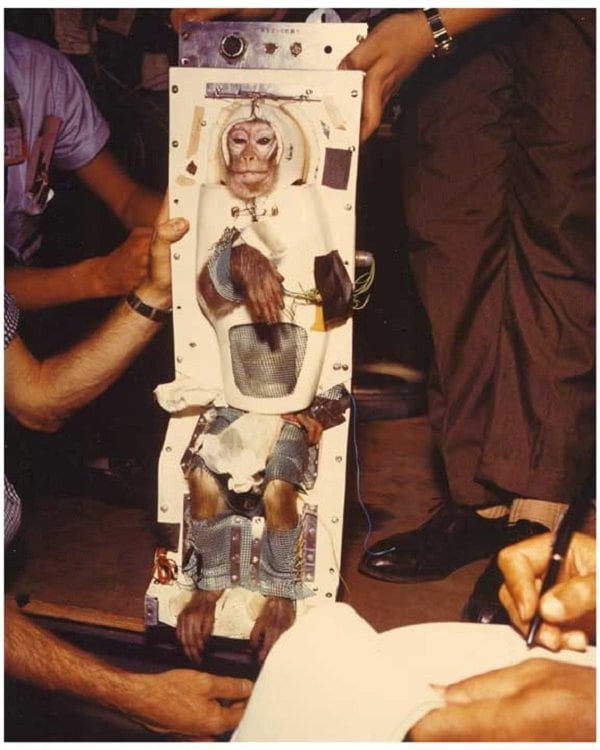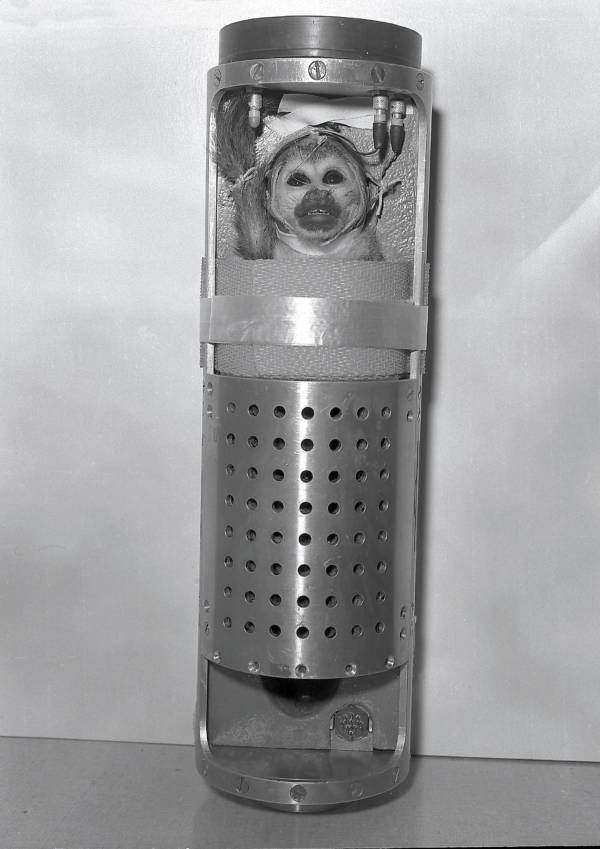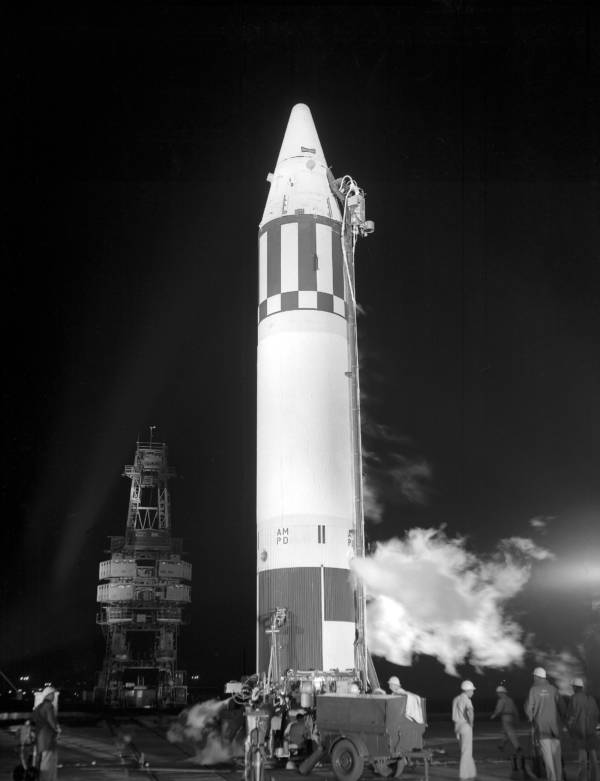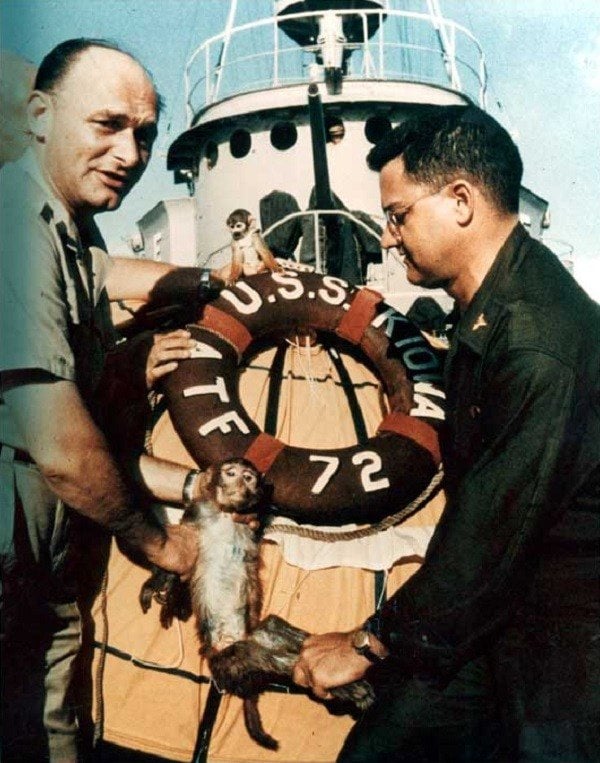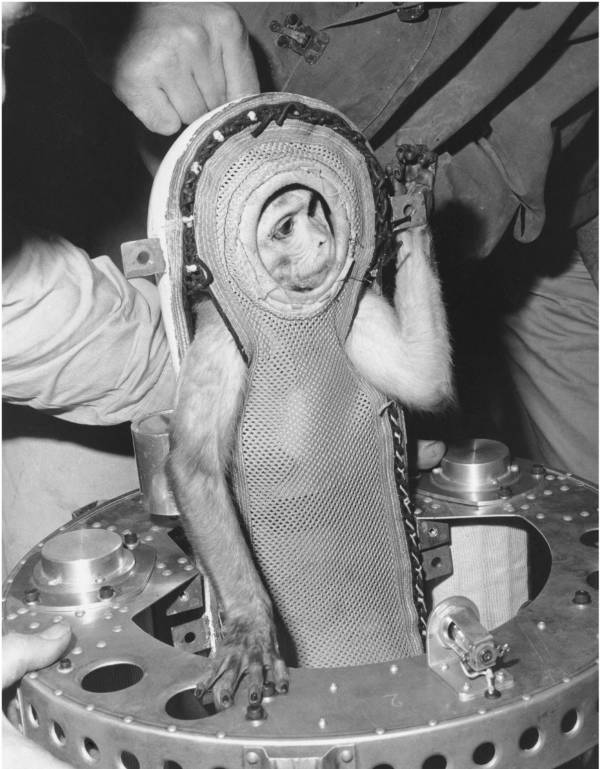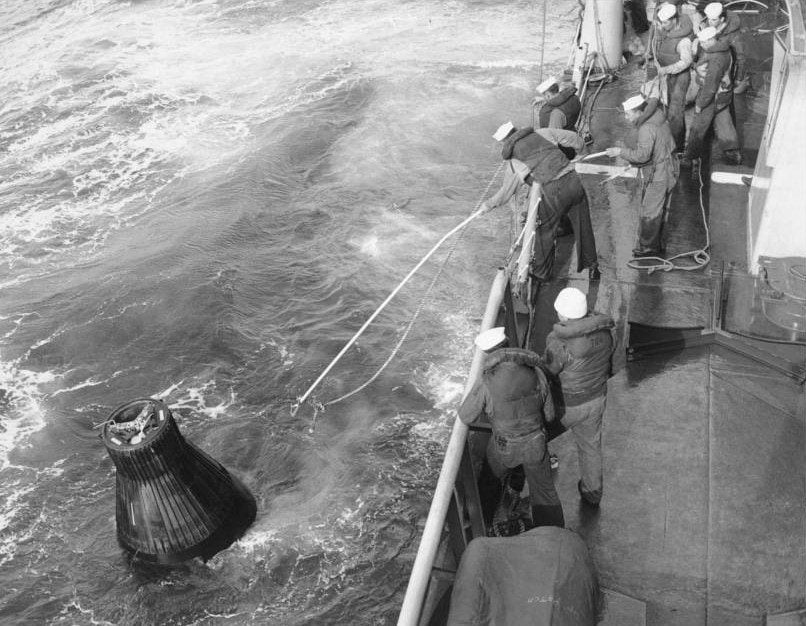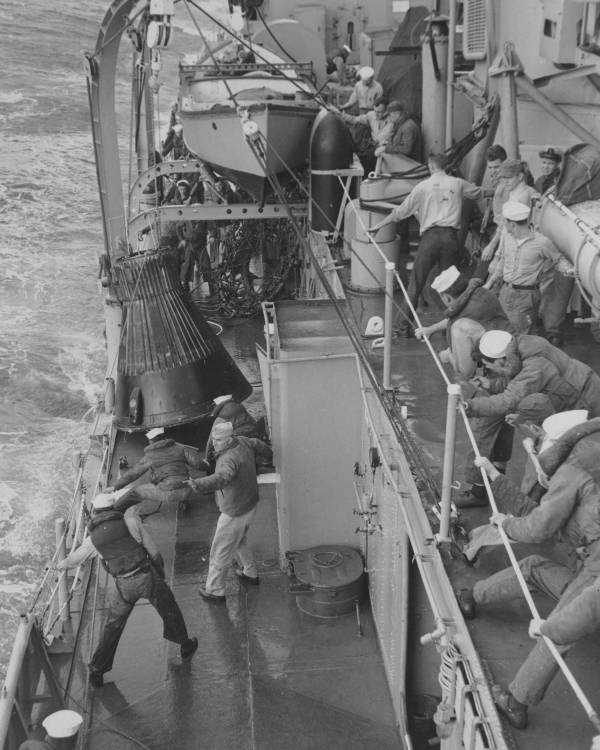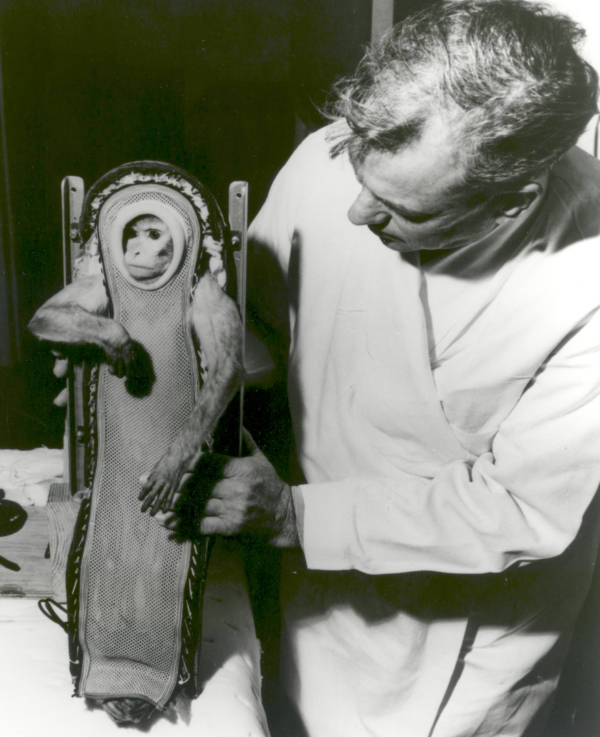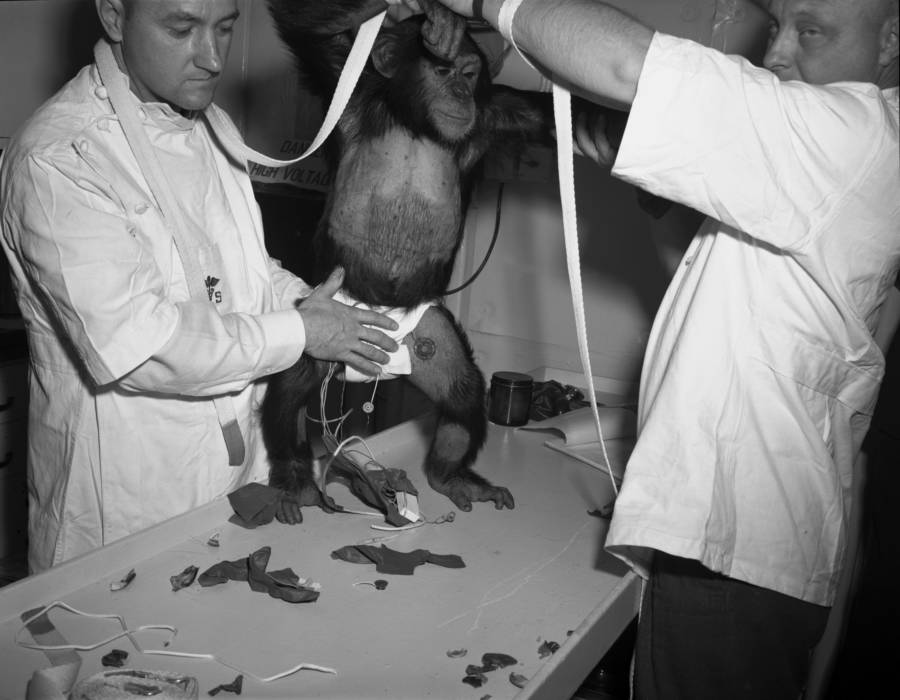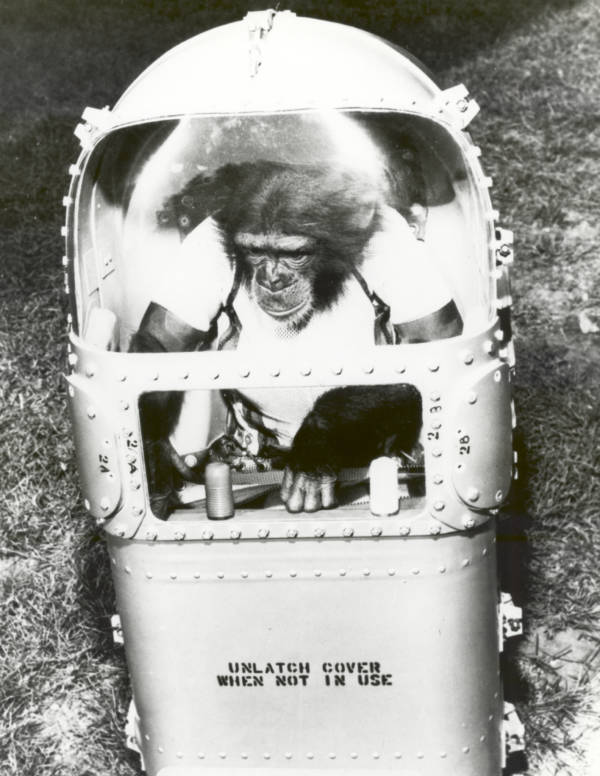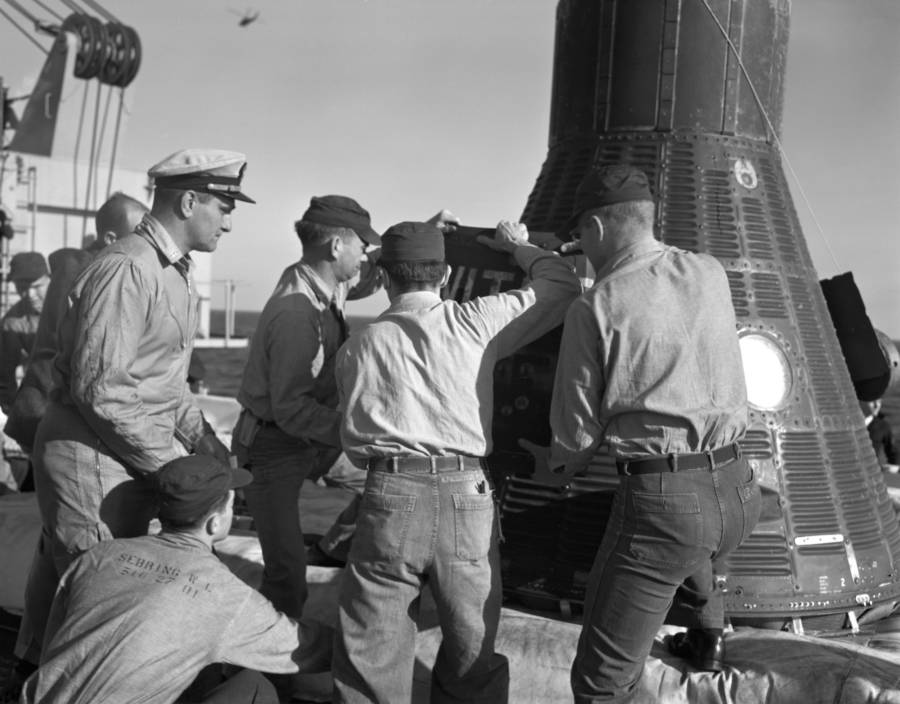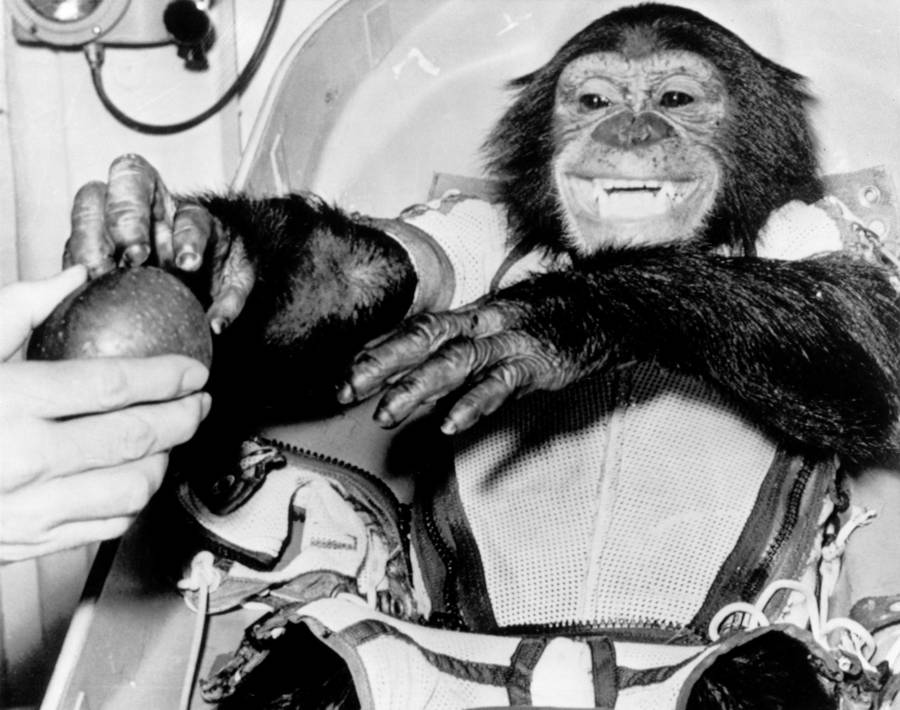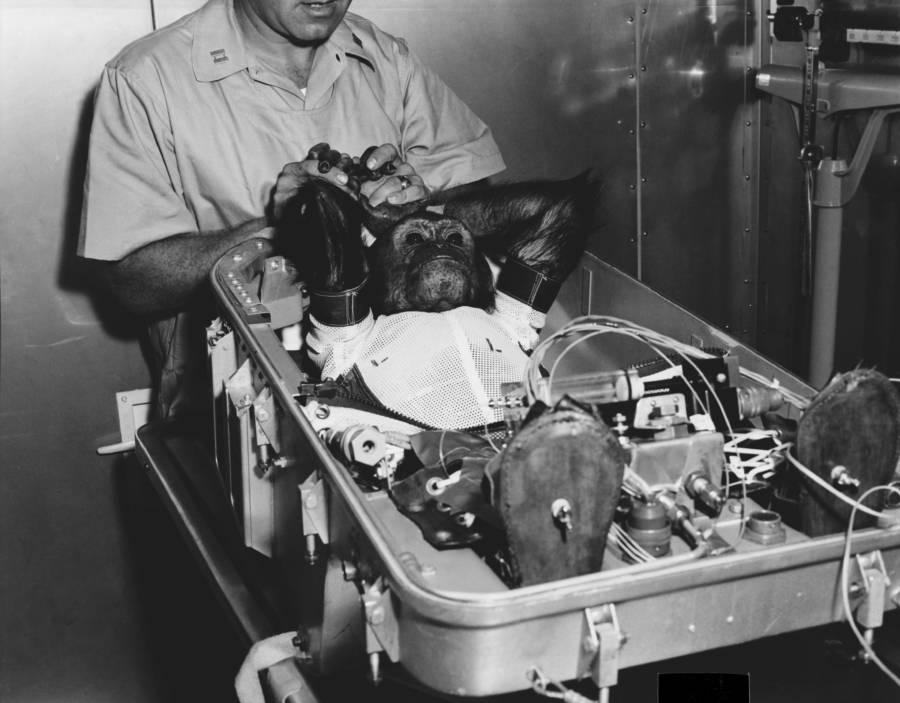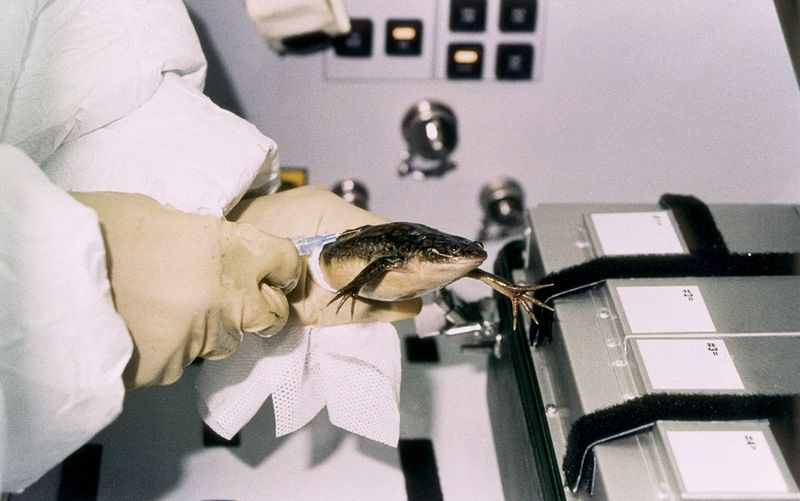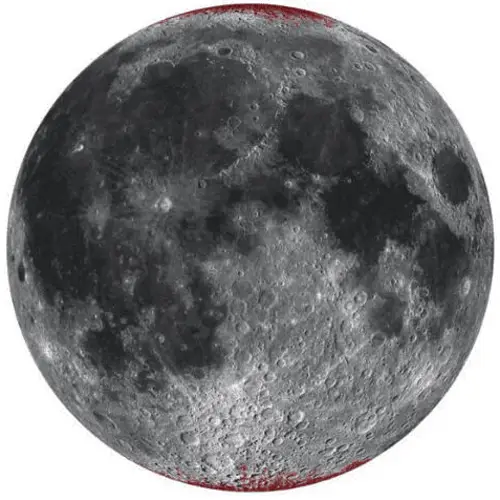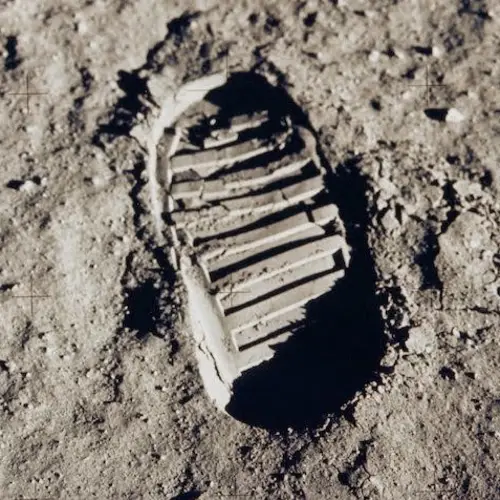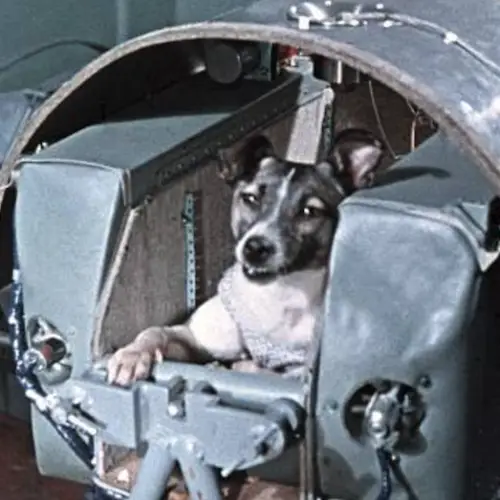1 of 41
Malyshka, one of the first dogs to be rocketed into the atmosphere, poses with her spacesuit. Her rocket wouldn't quite make it into orbit, but it would prove that sending a living creature into space was possible.
USSR, 1957.Bettmann/Contributor/Getty Images
2 of 41
Laika, the first dog to make into orbit, sitting in her spacecraft, Sputnik 2.
Kazakhstan, USSR. 1957.Sovfoto/UIG via Getty Images
3 of 41
Laika's spacecraft, Sputnik 2, was a small, cramped space. Soviet scientists kept her in increasingly small cages to get her used to claustrophobic conditions.
Kazakhstan, USSR. 1957.Keystone/Getty Images
4 of 41
Laika is fitted into a spacesuit.
Kazakhstan, USSR. 1957. Serge Plantureux/Corbis via Getty Images
5 of 41
Laika in the Sputnik 2 Capsule.
Kazakhstan, USSR. 1957.Bettmann/Contributor/Getty Images
6 of 41
Sputnik 2, before launched into orbit. Shortly after the craft made it into orbit, its thermal insulation tore loose. The spacecraft then overheated, killing Laika.
Baikonur Cosmodrome, USSR. November, 3, 1957.Getty Images
7 of 41
An artist's sketch of Laika inside of Sputnik 2 as it's launched into orbit. Soviet scientists had no plans of recovering her. Laika and her spacecraft disintegrated upon re-entry.
November, 1957.Getty Images
8 of 41
One year after Laika, Gordo became the first animal launched into space by American scientists.
Gordo managed to survive the trip into orbit, but she did not make it through re-entry. The nose cone parachute malfunctioned, and it crashed back into the earth at 10,000 miles per hour with Gordo inside.Wikimedia Commons
9 of 41
Soviet space dogs Belka and Strelka get ready to recreate Laika's flight. This time, though, there's one big difference -- the scientists plan on bringing these dogs home.
August, 1960.Bettmann/Contributor/Getty Images
10 of 41
Belka and Strelka were not the only animals on board. They were joined by a grey rabbit, 42 mice, rats, and flies.
November, 1959.Keystone-France/Gamma-Keystone via Getty Images
11 of 41
An unidentified space dog, possibly one of Belka and Strelka's alternates, wears a space suit and an oxygen mask.
October, 1959.Bettmann/Contributor/Getty Images
12 of 41
A Soviet space dog returns safely to Earth after completing its flight, circa 1950s.Popperfoto/Getty Images
13 of 41
After Belka and Strelka made it back safely, America had to catch up.
Here, at a NASA Press Conference, they introduce Able and Baker, the monkeys that will get America's space program back on track.
Florida, May 30, 1959.Wikimedia Commons
14 of 41
Able enjoys a snack shortly before being blasted into orbit.
1959.Wikimedia Commons
15 of 41
In a practice run for her flight, Able is placed in a nosecone.
1959.Wikimedia Commons
16 of 41
NASA scientists put Able into the capsule for a pre-flight test.
May 18, 1959.Wikimedia Commons
17 of 41
Able is strapped into her contour cradle. This will hold her in place during her flight.
1959.Wikimedia Commons
18 of 41
Able is placed into the spacecraft. The cradle was meant to mimic the way a human being would be held in place, once space travel reached the point that a person could be sent into space.
This photo was taken on May 28, 1959, mere moments before launch.Wikimedia Commons
19 of 41
Baker, a squirrel monkey, was the smaller of the two space-faring animals. To keep her from moving during her flight, she was kept in a tiny bio-pack couch that restrained her arms.
May 28, 1959.Wikimedia Commons
20 of 41
The Jupiter AM-18 prepares to liftoff. Able and Baker are inside.
If successful, they will become one of the first animals to go into space and return alive. Up to this point, however, NASA had never managed to bring an animal back safely.
NASA. May 28, 1959.Wikimedia Commons
21 of 41
Able and Baker make it back alive and become the first primates to survive a trip into space. In this moment, the dream of human spaceflight seemed more real than ever before.
USS Kiowa, May 28, 1959.Wikimedia Commons
22 of 41
Able is released from the life support capsule. Although Able made it back to Earth alive, she didn't last long.
Able died on June 1, 1959, days after her trip into space.Wikimedia Commons
23 of 41
Baker, however, lived on for another 25 years.
Here, people peer into a cage to see Baker, proudly labelled "the first lady in space".NASA
24 of 41
Months after Baker and Able's flight, a rhesus monkey named Sam followed them into space. Sam was sent to test equipment and the effects of space travel.
December 4, 1959.Wikimedia Commons
25 of 41
Sam blasts off into space on the Little Joe 2. Up in space, Sam would experience three minutes of weightlessness before being sent back home.
December 4, 1959.Wikimedia Commons
26 of 41
Sam is pulled out of the water by Navy officers aboard the USS Borie.
December 4, 1959.NASA
27 of 41
The capsule is safely brought aboard.
December 4, 1959.NASA
28 of 41
Sam makes it back alive.
December 4, 1959.Wikimedia Commons
29 of 41
Unlike the monkeys that went up before him, Ham the chimp had to operate the craft's controls in space.
January 31, 1961.Wikimedia Commons
30 of 41
Ham is placed in his biopack couch. If his flight is successful, NASA will attempt to launch a human being into space for the first time.Wikimedia Commons
31 of 41
Ham tries out his life support system. To teach him to use controls, Ham practiced pulling a lever whenever he saw a blue light. If he did it it correctly, he would get a banana -- but if he was too late, he got an electric shock.
January 28, 1961.Wikimedia Commons
32 of 41
Ham takes off in the MR-2. Once in flight, the capsule lost pressure, but Ham's space suit kept him from getting hurt. He was able to pull the switch during his mission, showing that a person could operate the controls in space.
January 31, 1961.Wikimedia Commons
33 of 41
The crew of the USS Donner rush to recover Ham from the spacecraft.
January 31, 1961.Wikimedia Commons
34 of 41
Ham, alive and safe, gets an apple for his hard work.
January 31, 1961.Wikimedia Commons
35 of 41
Ham shakes hands with the commander of the USS Donner.
With Ham home safe, NASA will try to recreate his flight with a human being. They intend to make Alan Shepard the first person to fly into space.
January 31, 1961.Wikimedia Commons
36 of 41
Soviet space dog Zvezdochka, who was sent into space as a test flight before sending up Yuri Gagarin.
Delays in the NASA project would push Alan Shepard's flight back until May 5, 1961. With Zvezdochka's help, Yuri Gagarin would beat Shepard into orbit and into the history books.
March, 1961.Bettmann/Contributor/Getty Images
37 of 41
Even after Yuri Gagarin became the first man in space, scientists continued to experiment with animal space travel.
Enos the chimpanzee was sent into space as a test run before John Glenn became the first American to orbit the Earth.
December 18, 1961.Wikimedia Commons
38 of 41
Soviet Space Dogs Veterok and Ugolyok get ready to travel into space. They would set a record by spending 22 days in orbit. To date, this is still the longest time that dogs have spent in space.
USSR. 1966.Wikimedia Commons
39 of 41
A spider named Arabella becomes the first to build her web in space.
As human space travel became more common, the purposes of animal space flight changed.
January 1, 1973.Wikimedia Commons
40 of 41
Animal research continues on the International Space Station. Here, an astronaut handles a frog in space, conducting an experiment on how microgravity affects amphibian development.
1992.NASA
41 of 41
Like this gallery?
Share it:
